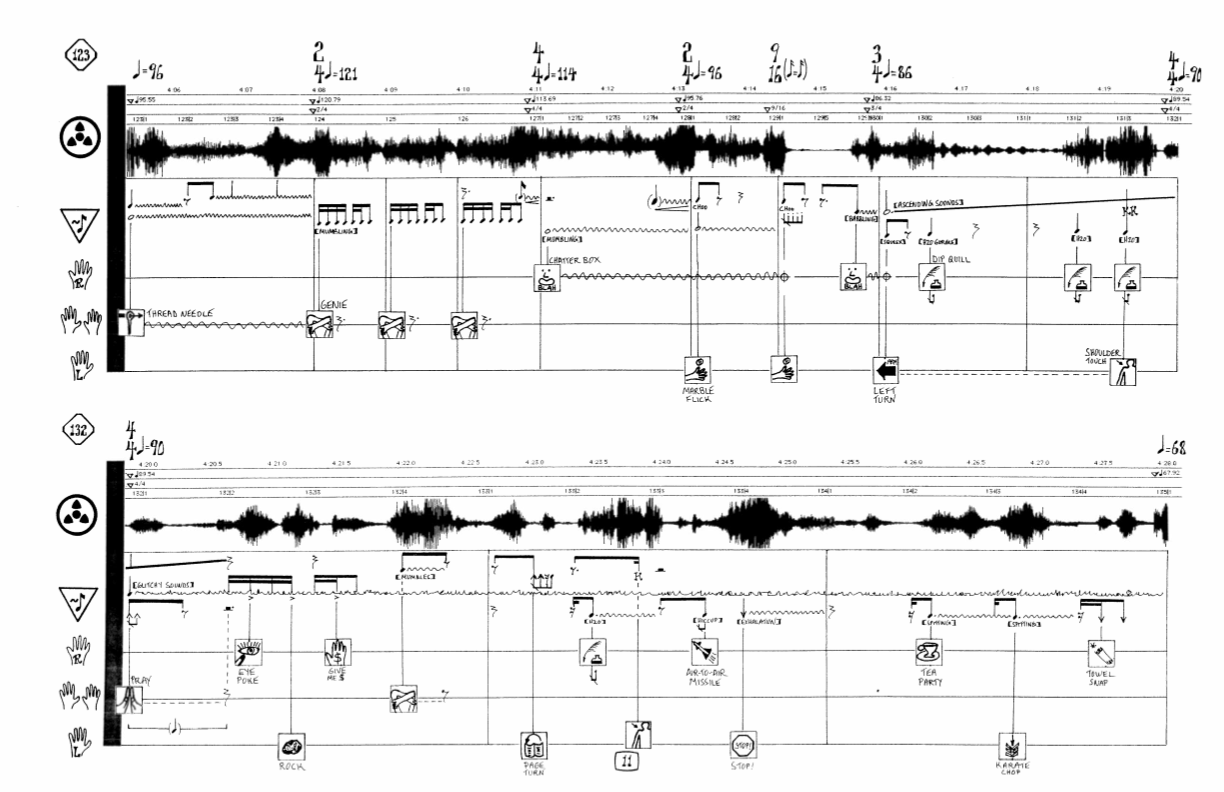Aphasia (2009)

Vocalist or actor (performing sign language) with tape. Commissioned for Nicholas Isherwood and the Stockhausen-Isherwood Project (a concert of works by Applebaum, Stockhausen, Robert HP Platz, Jean Claude Risset, Daniel Teruggi, Enrico Cocco, & Jeffrey Stolet) by the GRM—Le Groupe de Recherches Musicales (Paris), Centre de Recherches et de Formation Musicales de Wallonie (Brussels), Musica Experimento (Rome), the University of Oregon (Eugene), and the Stanford University Lively Arts (Palo Alto).
Aphasia, conceived originally for singer and two-channel tape, was commissioned by the GRM, Paris and composed for virtuoso singer Nicholas Isherwood. The tape, an idiosyncratic explosion of warped and mangled sounds, is made up exclusively of vocal samples—all sung by Isherwood and subsequently transformed digitally. Against the backdrop of this audio narrative, the singer performs an elaborate set of hand gestures, an assiduously choreographed sign language of sorts. Each gesture is fastidiously synchronized to the tape in tight rhythmic coordination.
The eccentricity of the hand gestures is perhaps upstaged only by the observation that the singer, however extraordinary, produces no sound in concert. (In fact, the role of the “singer” may be taken by any performer of suitably enthusiastic inclination and conviction.) In that regard Aphasia may be the first piece in the vocal canon that can be performed even when the singer has laryngitis.
Isherwood deemed the piece’s rigid synchronization impossible (except perhaps for a dancer) and instead championed a looser, more improvised version I call Aphasia—Dialect. (He also included an excerpt from the score in his seminal book The Techniques of Singing, Bärenreiter Verlag, 2013.)
Considering his pronouncement a challenge, I learned the piece (it took me four months of constant work to memorize it) and made a video of my performance. The video subsequently attracted dozens of performers—mostly intrepid percussionists—to learn the piece. Ironically it has become my most performed recent piece: I know of some 58 players who champion it and have played it in 17 countries in nearly 200 performances since 2011.
Some notable performances include:
- Steve Schick at his two-night Miller Theater concert in New York, a retrospective of his most important solo repertoire (for which the New York Times Arts Section identified the piece in its “Best of 2014” distinction for the year’s most humorous work);
- Parlour Tapes+ attempt to stage a performance in Chicago’s Grant Park with 100 synchronized players (they got six—which is five more than I usually get); and
- Morris Palter at Brazil’s Festival Internacional de Musica Erudita for which there were five stompy ovation curtain calls necessitating an extra scheduled performance at the end of the festival.
Aphasia was also the subject of Robin Eggers’ masters thesis at the Rotterdam Conservatory for which he also developed a continuum of three versions varying in its degree of performer persona: an intensely histrionic one with extravagant facial expressions; a conventional one, as composed; and a version performed in the dark with black light illuminating only his fluorescent painted hands.
Beginning first with the Isopangram movement of Straitjacket and then with Aphasia, the hand gestures have since been used in several subsequent pieces. They now constitute what I think of as a nonsense sign language of more than 200 gestures. These are catalogued by various qualities such as height; one- versus two-handedness; and whether the gesture lends itself to a static pose, variable rhythmic articulation, or a continuous motion. Experimental | Why Experimental?
Experimental | Why Experimental?